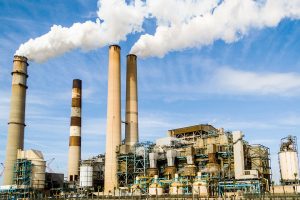
Incentives critical in accelerating net-zero transition — UNDP advisor
INCENTIVES for investment and research and development are needed to drive the Philippine decarbonization campaign en route to achieving its net-zero targets by 2030, a United Nations Development Programme (UNDP) advisor said.
At a Makati Business Club forum on Thursday, Michael Sheren, president of MVGX Tech and UNDP Sustainable Finance Hub Senior Advisor, said trillions of dollars worth of investment are needed for the green transition.
In particular, Mr. Sheren said that there is a need to invest $3.5 trillion annually to sustain the transition.
“That is roughly how much you will need moving forward. But what you can do is take some of the money earmarked for the brown economy and shift it over. That way … it will make it less expensive, but you will still need $2 trillion,” Mr. Sheren said.
“But there’s roughly $100 trillion in the debt capital markets right now available, so the money is there, the technology is there, and what it really means is having policymakers help and work with industries in setting incentives,” he added.
Citing an example of a policy implemented in the UK, he said that the UK government pushed hard for offshore wind, which now allows the country, on a good day, to get 80–90% of its energy requirement from renewables.
“That was not cost-effective when it started, but the government made the policy that allowed it to happen,” he said.
According to the Department of Energy’s website, renewable energy developers enjoy income tax holidays, special real estate tax rates, a corporate tax rate of 10% after their income tax holiday, and a zero-value-added tax rate, among others.
“So if you’ve got innovation, I would also say things like capex and research and development tax benefits are crucial. This transition isn’t nice to have; if we were just trying to get from one economy to another, that is one thing, but this is an existential threat to the species,” he said.
“There are huge vested interests in some of those existing technologies, and being able to provide government and innovation support is the absolute key,” he added.
He said that manufacturers he has spoken to said they can build renewable energy facilities that are cheaper than any kind of fossil fuel equivalent.
He added that one of the biggest areas for improvement for the government is ensuring adequate transition financing.
“This refers to how you will finance those brown industries that you still need until they run out. You can’t just shut everything down immediately,” he said.
“So instead of doing 30-year bonds, you do 10-year bonds with really tight strings attached to them,” he added.
He said that a bank may look to finance a brown-economy facility for a time until there’s a renewable energy facility that can replace it.
The government is aiming to reduce carbon emissions by 75% by 2030, while increasing the share of renewable energy in the power generation mix to 50% by 2040. — Justine Irish D. Tabile



